All products featured are independently chosen by us. However, SoundGuys may receive a commission on orders placed through its retail links. See our ethics statement.
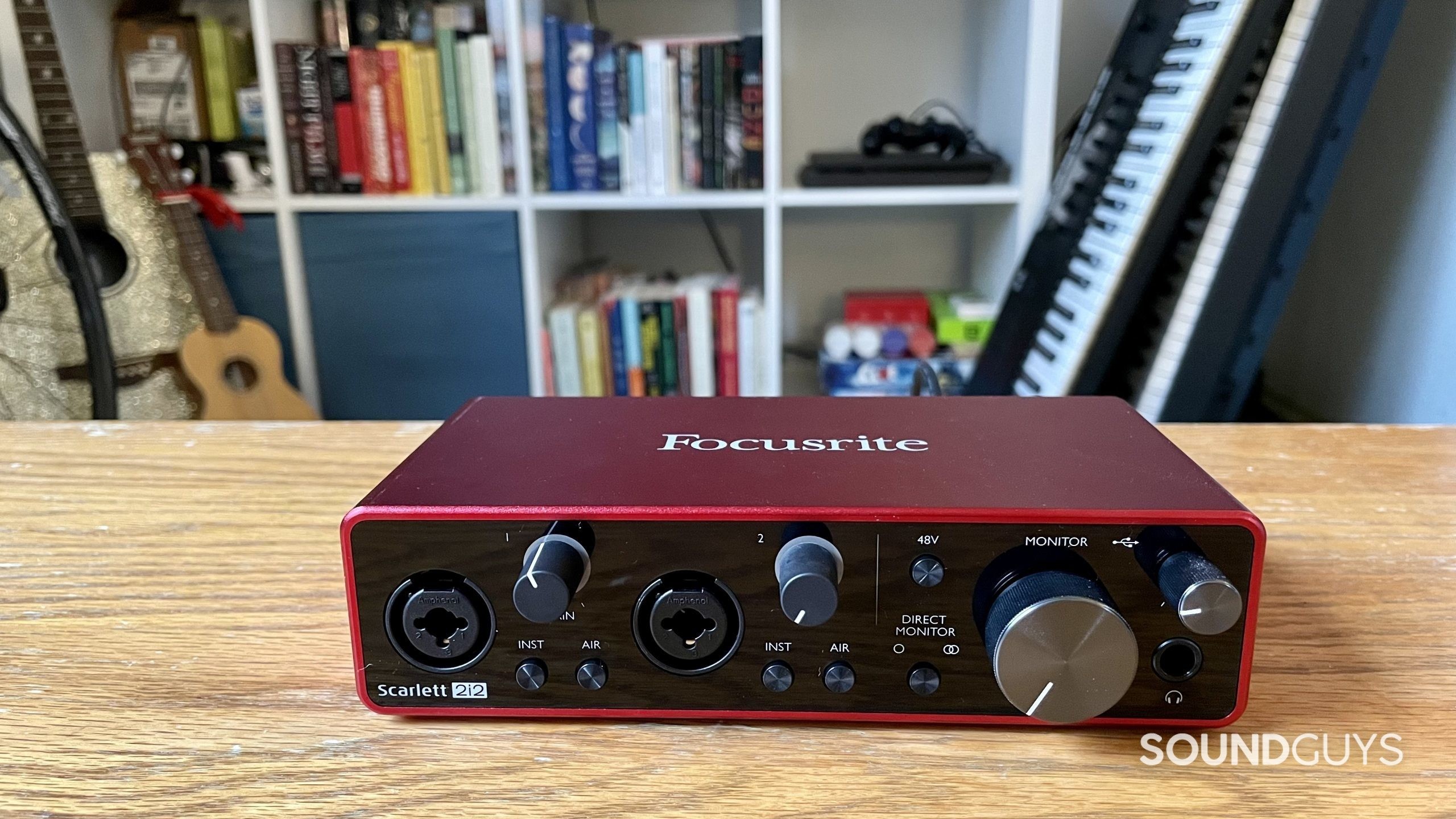

Focusrite Scarlett 2i2 Studio (3rd Generation) review
Published onFebruary 8, 2023


Focusrite Scarlett 2i2 Studio
You’ve been writing song after song with your band, and you’re starting to sound pretty good — perhaps it’s time to hit the recording studio. Garage band members probably aren’t looking to drop thousands of dollars on studio session time, so it may be worth putting together your own home recording setup. Recording bundles like the Focusrite Scarlett 2i2 Studio are a good place to start. This bundle includes nearly everything you need to start recording straight into your computer and begin the music production process.
Editor’s note: this is the first version of the article. Updates will follow as the market changes.
The Focusrite Scarlett 2i2 Studio is a great budget bundle of products to get anyone started on their home recording journey. This bundle comes with three main items: a USB audio interface, a condenser microphone, and a pair of studio headphones. The major selling point of this product is the Scarlett 2i2 audio interface, which is available for individual sale, but bundling everything together makes for a much easier shopping trip.
What’s included in the Focusrite Scarlett 2i2 Studio bundle?
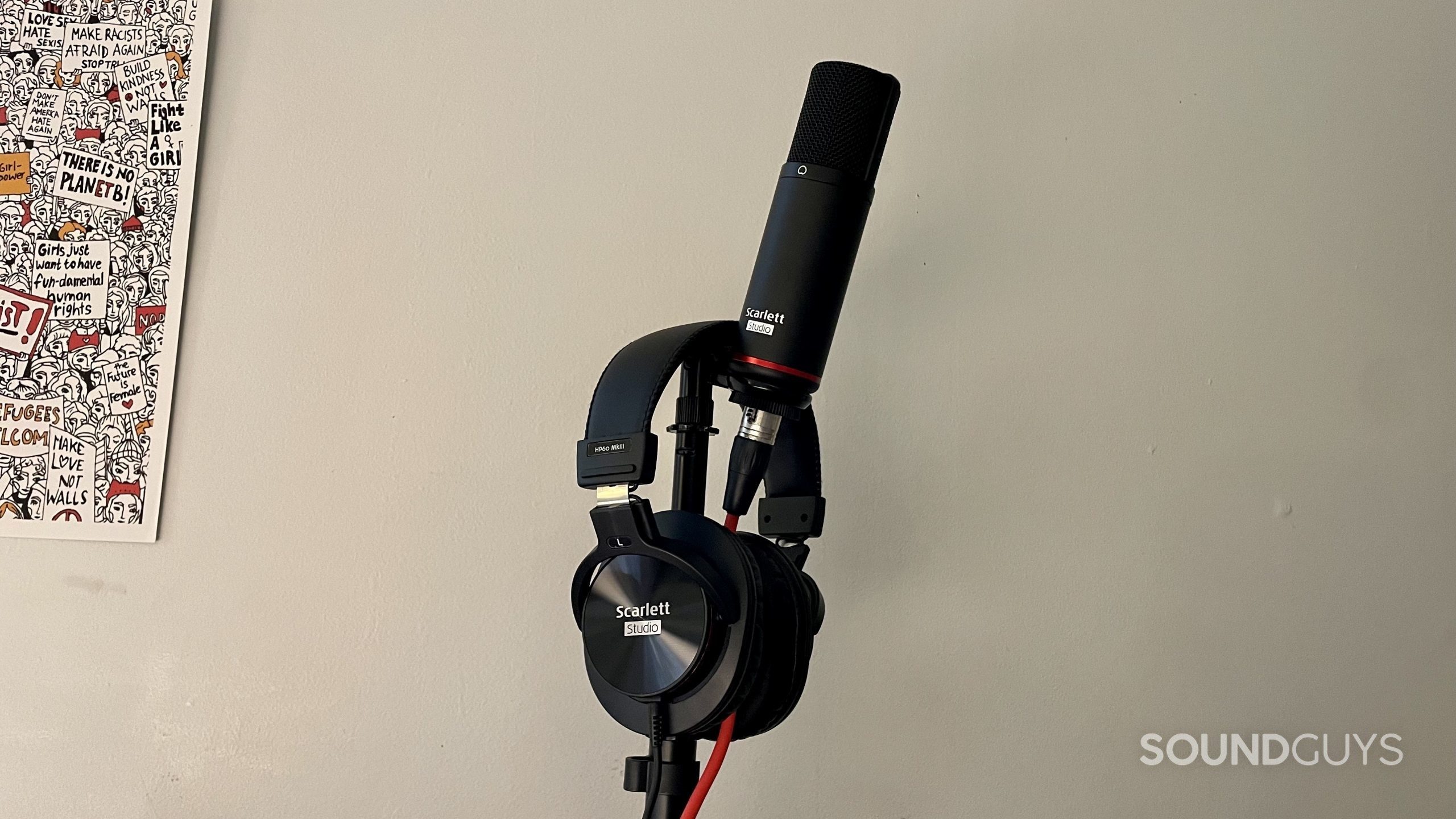
The main event of the Focusrite Scarlett 2i2 Studio is, of course, the Scarlett 2i2 (3rd Gen) USB audio interface. It allows you to record high quality audio from a microphone or electronic instrument into your computer via the included USB-C cable. The Scarlett 2i2 is easy to understand so even a beginner should be able to produce decent audio.
The closed-back pair of studio headphones, named HP60 MkIII, is only available in Focusrite Scarlett bundles. It’s very lightweight, and comfortable enough to wear for long recording and mixing sessions. The ear cups unfortunately don’t swivel, but the headband is quite flexible and doesn’t clamp down too hard on your head or get too warm.
The bundle also comes with the Focusrite CM25 MkIII, a condenser microphone with a durable all-metal build, along with a 3m XLR cable and a proprietary mic clip that allows you to angle the mic in any direction. This can be really helpful if you’re recording acoustic instruments as it lets you shimmy the mic into those nooks and crannies. The bundle unfortunately does not come with a pop filter, which we consider a necessity accessory for almost any vocal microphone. You will also need your own microphone stand to use the mic properly. You can buy other versions of the Focusrite Scarlett bundle that include these accessories for an additional cost.
What’s it like to use the Scarlett 2i2 USB audio interface?
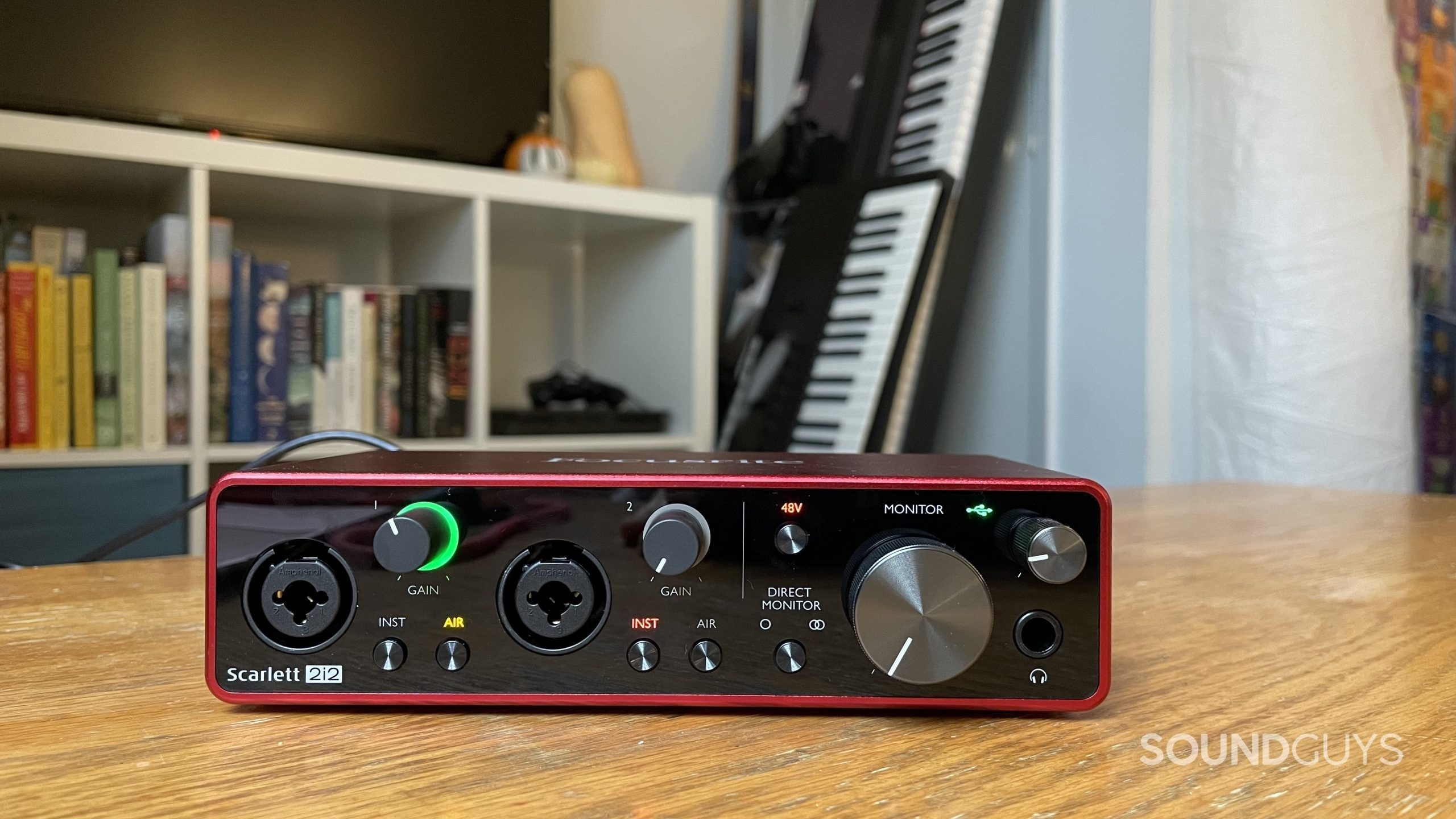
The main reason anyone buys this bundle is for the Scarlett 2i2 audio interface. When you first plug the Focusrite Scarlett 2i2 into your computer a Scarlett application will pop up on your desktop. You’ll need to download the Focusrite Control software to your computer in order to operate the interface, and from there the process is pretty simple. In your digital audio workstation (DAW), you may have to manually select the Scarlett 2i2 as your audio input and output, and then you can plug your microphones and/or instruments in. The Scarlett 2i2 USB interface records up to 24-bit/192kHz audio, ensuring that the quality is maintained from the source to your track.
The Scarlett 2i2 interface features two inputs that can be used simultaneously, and they accept both XLR and 1/4-inch cables. Each input features a button labeled INST that will adjust the preamp accordingly if you’re plugging an instrument, such as an electric guitar, in with a TS cable. If you want to plug something like a keyboard into the Scarlett 2i2 with a balanced TRS cable, you don’t need to select the “INST” button.
The Focusrite Scarlett 2i2 features 48V phantom power which you’ll need to enable when recording audio with a condenser microphone, such as the one that the Studio bundle comes with. Do not use the phantom power when recording with a non-condenser microphone as it may damage your mic.
Purchase of the Focusrite Scarlett 2i2 Studio includes music-making software. Create a free account on Focusrite’s website to download it. The bundled software includes:
- A quick start tool
- Avid – Pro Tools First Focusrite Creative Pack
- Ableton – Live Lite
- XLN Audio – Addictive Keys
- Softube – Time and Tone Bundle
- Focusrite – Red Plug-in Suite
- Focusrite – Plug-in Collective
How do you control the Focusrite Scarlett 2i2 Studio?
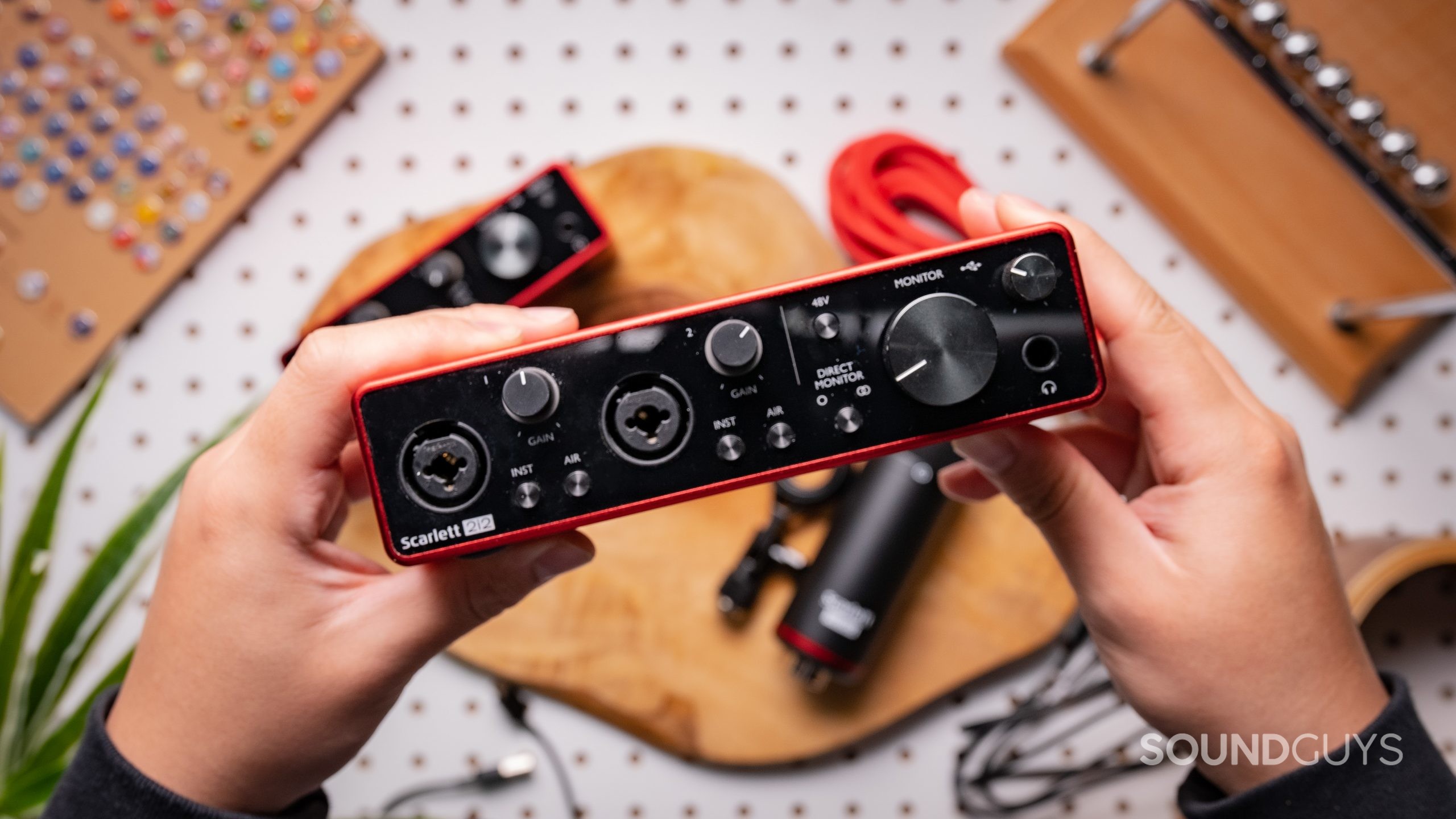
The Scarlett 2i2 audio interface houses many buttons and knobs, all of which are conveniently labeled. Each gain knob has an LED ring surrounding it — it lights up in green when it is receiving input, yellow when it is coming close to distorting, and red when it is clipping. If the ring lights up red, you should decrease the gain because it means you are overloading the system.
You can use the direct monitor button to toggle between hearing your real time, latency-free audio played through your headphones/speakers in mono or stereo, or you can switch it off. Switching the button to off will allow you to monitor through your DAW rather than directly through the interface. You can monitor your recording via the headphones output on the front side of the Scarlett 2i2, or you can connect to studio monitors with the balanced right and left speaker outputs on the back of the interface.
Each input on the Focusrite Scarlett 2i2 has a button for toggling on and off AIR. This is a filter that subtly adjusts the behavior of the preamp built into the interface to increase your audio’s clarity in the mid and high frequencies. Listen to the microphone samples in the microphone section of this review to hear what AIR actually sounds like.
How does the Focusrite Scarlett 2i2 Studio connect?
The Focusrite Scarlett 2i2 interface connects to your computer via included USB-C cable. If you have a computer with a USB input you’ll need to get a USB-A to USB-C adapter. The backside of the interface also features a Kensington security lock input, which can be helpful if you share a studio space with other people, or just want to ensure that your Scarlett 2i2 stays in one place.
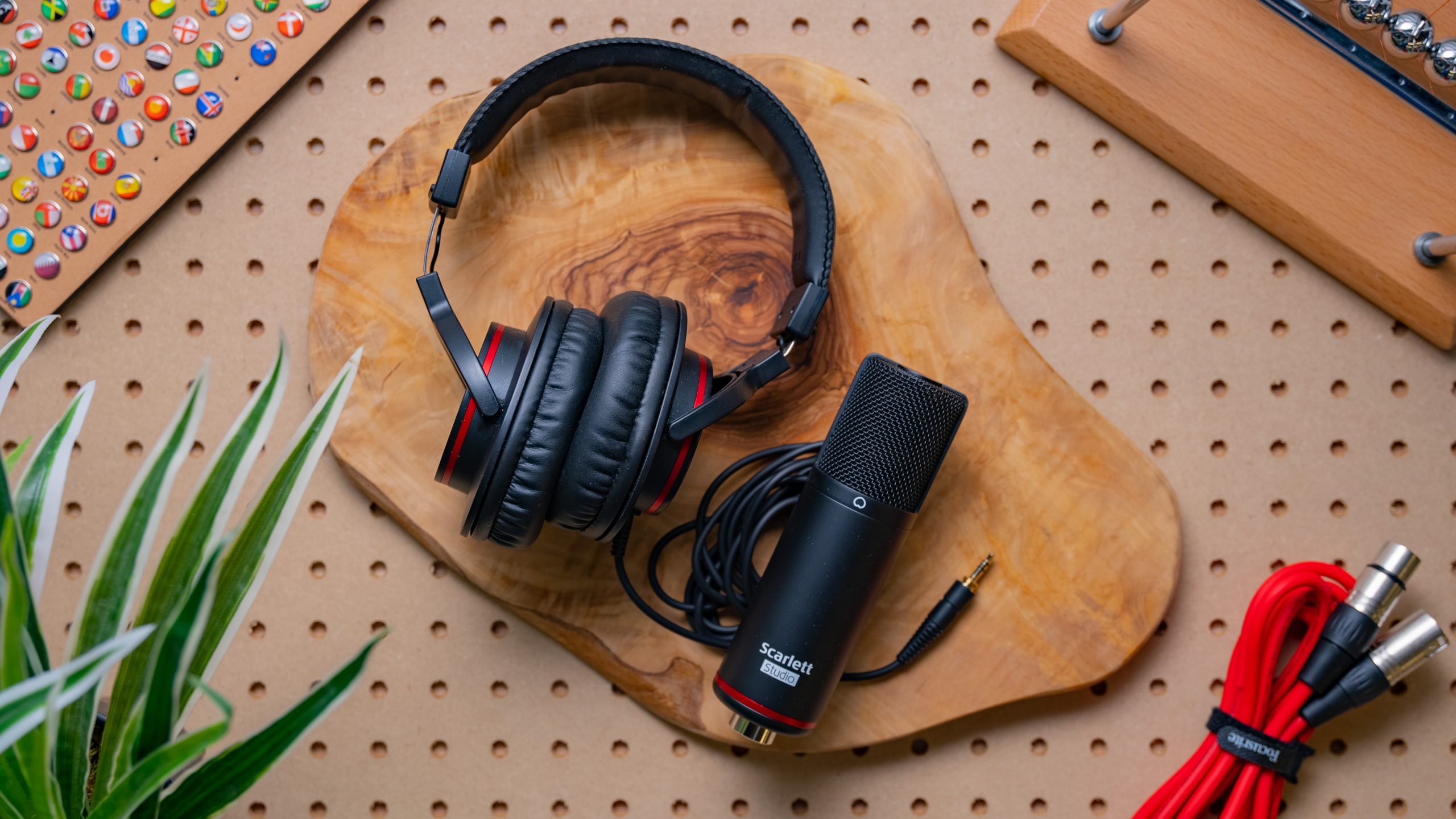
The Focusrite HP60 MkIII includes an attached cable that ends in a 3.5mm jack. It also comes with a 3.5mm to 1/4-inch cable adapter to make it compatible with the Scarlett 2i2. Unfortunately, the cable feels a bit cheap and, since it can’t be replaced, I worry that it could impact the life of the headphones. The Focusrite CM35 MkIII microphone connects via included XLR cable.
How well does the Focusrite HP60 MkIII block out noise?
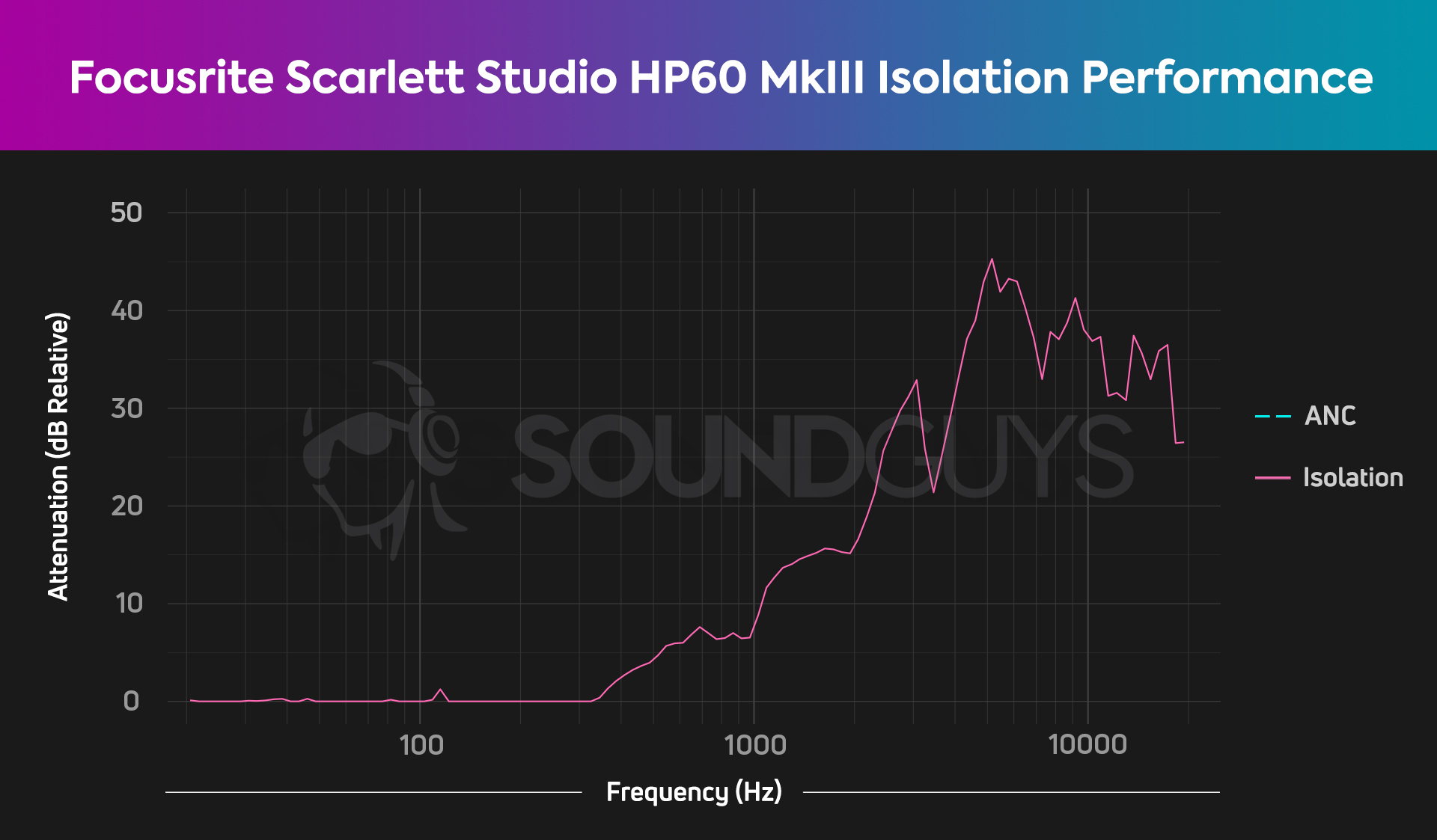
The Focusrite HP60 MkIII isn’t ideal for use for casual listening at your local cafe—the headset lets in a lot of ambient sound at lower frequencies. But it’s pretty well suited to recording and mixing as it will produce minimal “spill”or “bleed” into your microphones.
How does the Focusrite HP60 MkIII headphones sound?
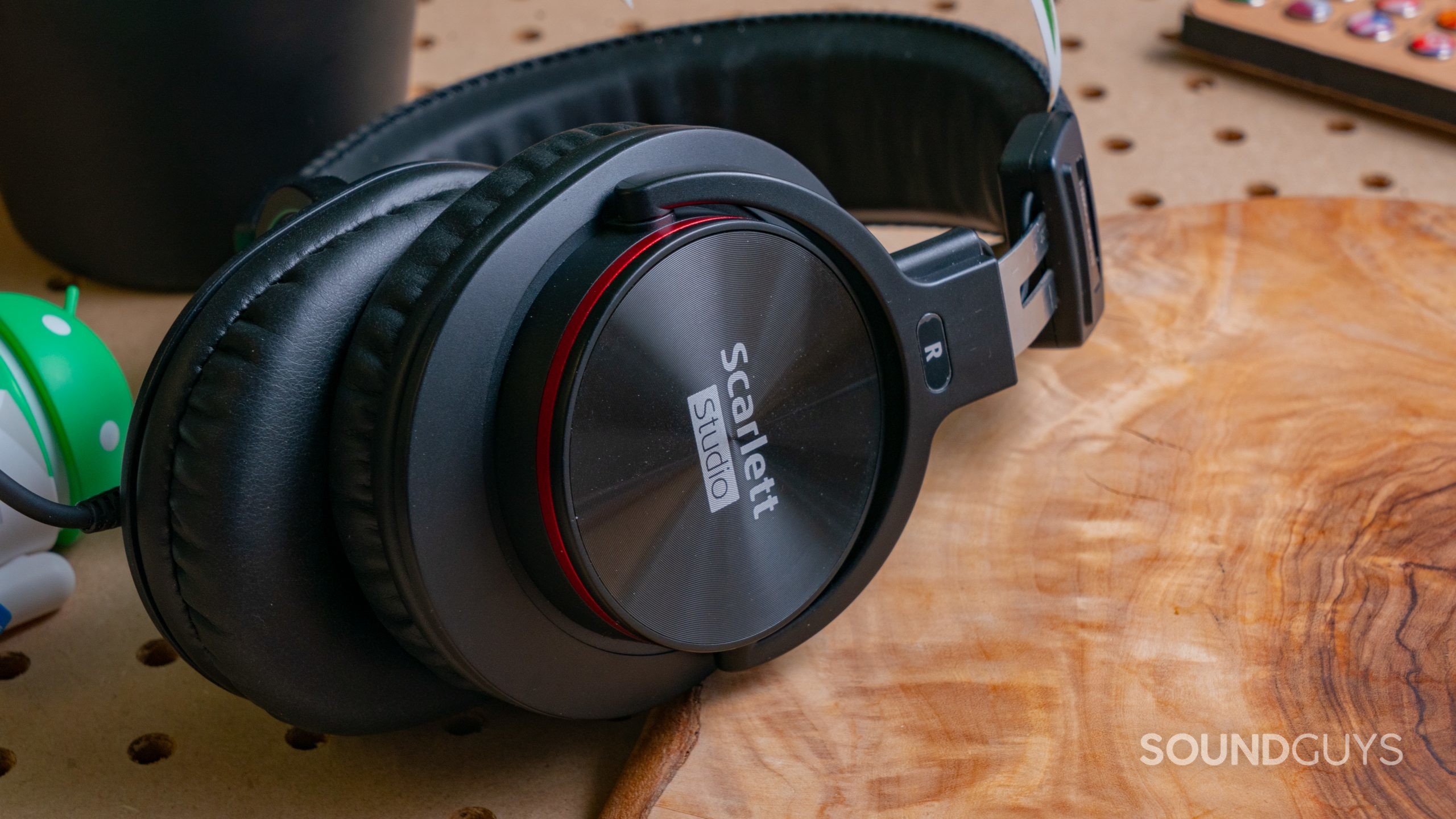
The HP60 MkIII’s frequency response curve very closely matches our headphone preference curve, which means it has a sound signature that we consider to work well for casual listening as well as production duties.
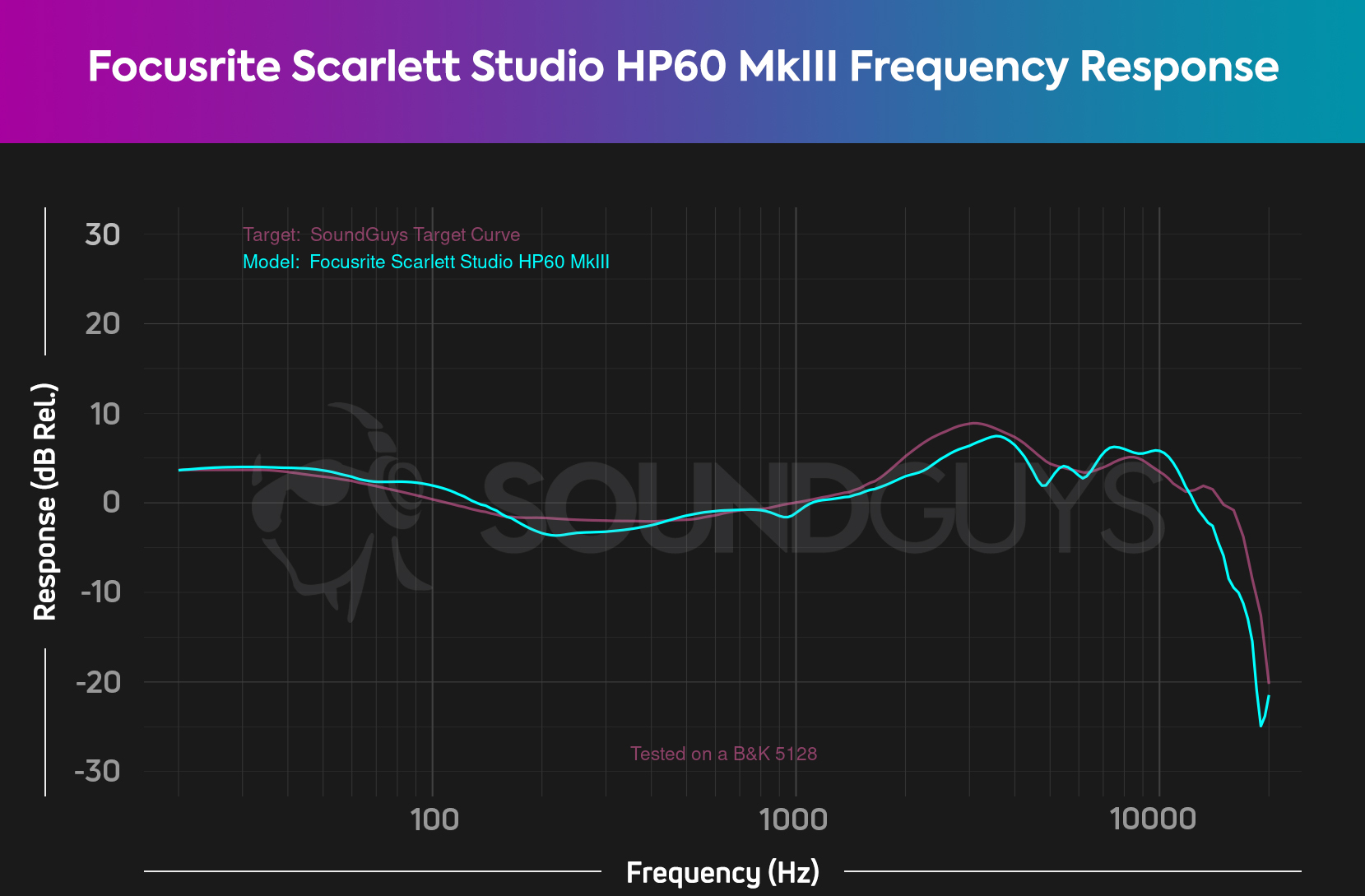
Lows, mids, and highs
This studio headphone does a decent job at allowing space in the mix for each element of a song — a necessary quality when you’re using headphones to produce music with subtleties. The background vocals screaming and shouting at 1:45 in Happier Than Ever – Edit by Billie Eilish are clearly perceptible, and they don’t detract from the mid-heavy rock guitar in the center of the mix.
Same Boat by Lizzy McAlpine is a much cleaner sounding track, making the clarity of the background sounds and harmonies in the chorus all the more important. At 1:38, the bassy piano hits somewhat drown out Lizzy’s voice, which occurs in the midrange of the frequency spectrum, but they don’t shroud out the high frequency piano twinkles.
How does the Focusrite CM25 MkIII condenser microphone sound?
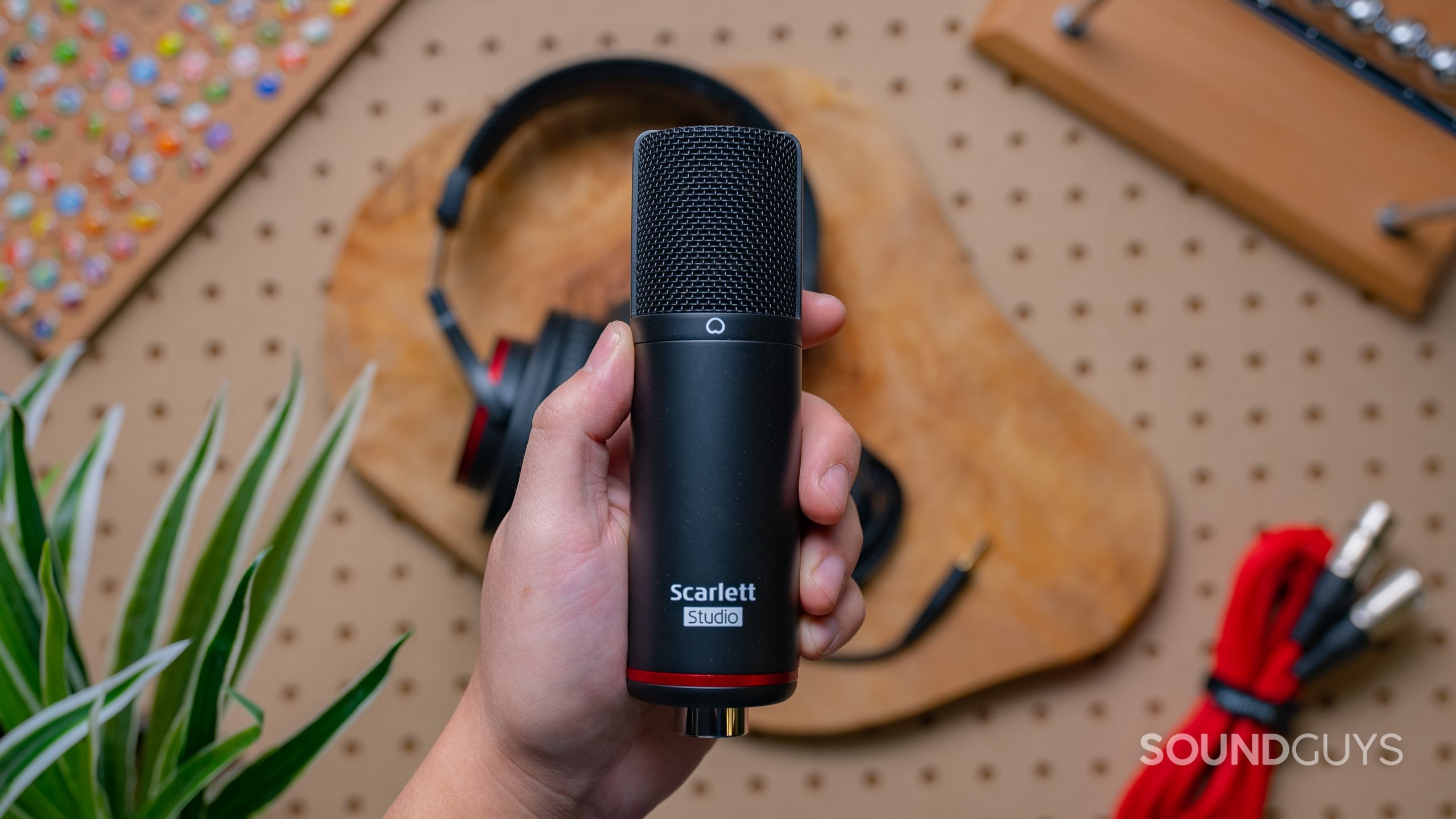
The Focusrite CM25 MkIII sounds pretty decent, especially when you consider that the condenser microphone adds less than $100 USD to the Scarlett 2i2 Studio bundle. Condenser microphones are ideal for recording vocals and acoustic instruments because they pick up subtle sounds with clarity due to their high sensitivity and lower noise. This sensitivity, however, also means they are quick to pick up unwanted sounds and therefore do best when accompanied by a shock mount and pop filter.
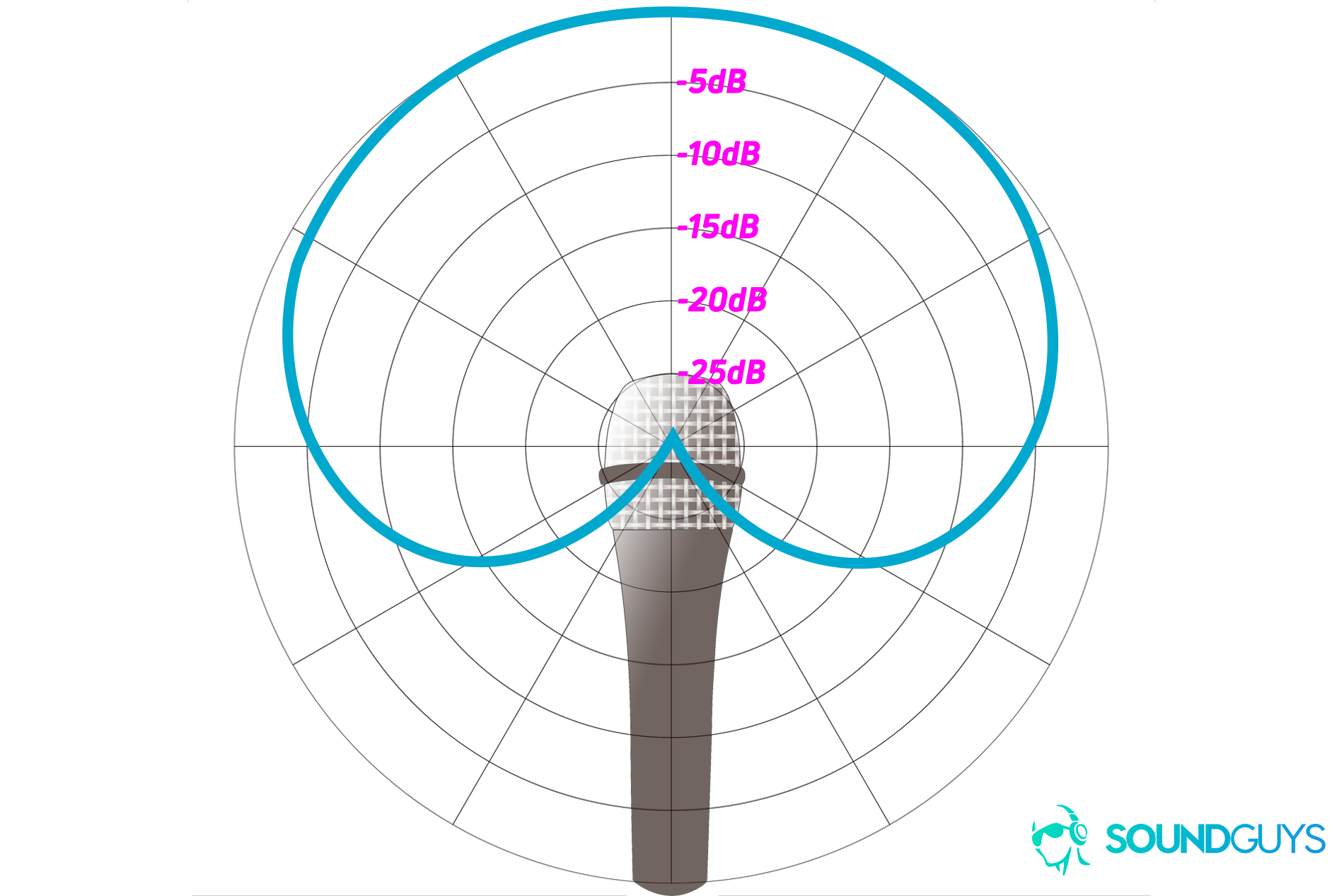
The Focusrite CM25 MkIII records audio in a cardioid polar pattern, which means the best way to record with it is to direct your audio source into the front of the microphone, identified by the Focusrite logo. Mics with cardioid polar patterns pick up audio best from the front, and a bit from each side, while rejecting audio sources that are directly behind the mic.
The Focusrite CM25 MkIII unfortunately does not come with a pop filter, and it certainly has some issues with picking up plosives (harsh p sounds) without one. In the speaking sample below, even when I am 9 inches away from the capsule of the microphone, you can still hear the microphone pop when I pronounce the letter p.
Focusrite CM25 MkIII speaking sample:
Focusrite CM25 MkIII acoustic guitar sample:
Overall, the audio sounds fine for speaking and even acoustic guitar, but I notice an issue in the singing samples below. Without AIR, the microphone slightly distorts around 0:25 when I sing the word “always” (you may need to wear headphones in order to hear the subtle distortion). The CM25 MkIII is not the best sounding microphone out there, but you can’t expect it to be at such a cheap price point.
I’ve created these samples of me singing the same song in the same key at the same gain level, with the only difference being that the first sample has the AIR button turned, and the second sample has it turned off. The difference in the sound of each recording is almost imperceptible, but luckily it is up to you to choose whether to use this feature or not while recording.
Focusrite CM25 MkIII singing sample (with AIR):
Focusrite CM25 MkIII singing sample (without AIR):
How does the microphone sound to you?
Should you buy the Focusrite Scarlett 2i2 Studio?
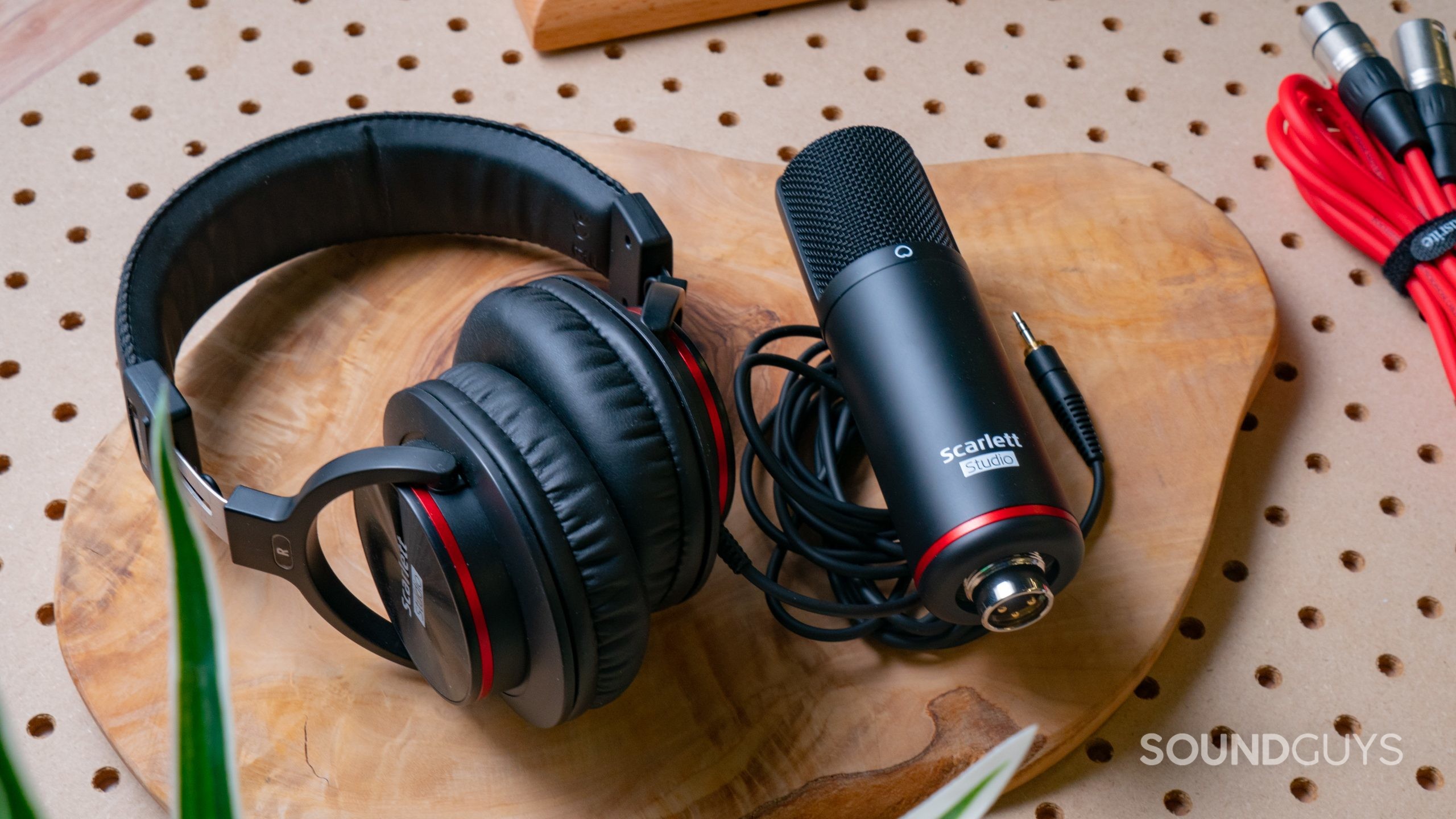
The Focusrite Scarlett 2i2 Studio is a really good deal for anyone entering the realm of home audio recording. The USB audio interface has a cute, compact design that will fit great on your desk. It includes two multifunctional input channels, has direct monitoring outputs for both headphones and speakers, and has helpful onboard gain and sound setting controls. It’s a well designed, good value interface.
The bundled CM25 MkIII microphone and HP60 MkIII headphones hardly add to the price of this product, but they certainly add to the ease of use. By making just a single purchase you’ll have basically everything you need to start recording, save for a pop filter and mic stand. The sound quality of both the mic and headset are not the most accurate out there, but if you’re looking for the best bang for your buck, the Focusrite Scarlett 2i2 Studio bundle should definitely be on your short list.

How does the Focusrite Scarlett 2i2 Studio compare to the Focusrite Scarlett Solo Studio?
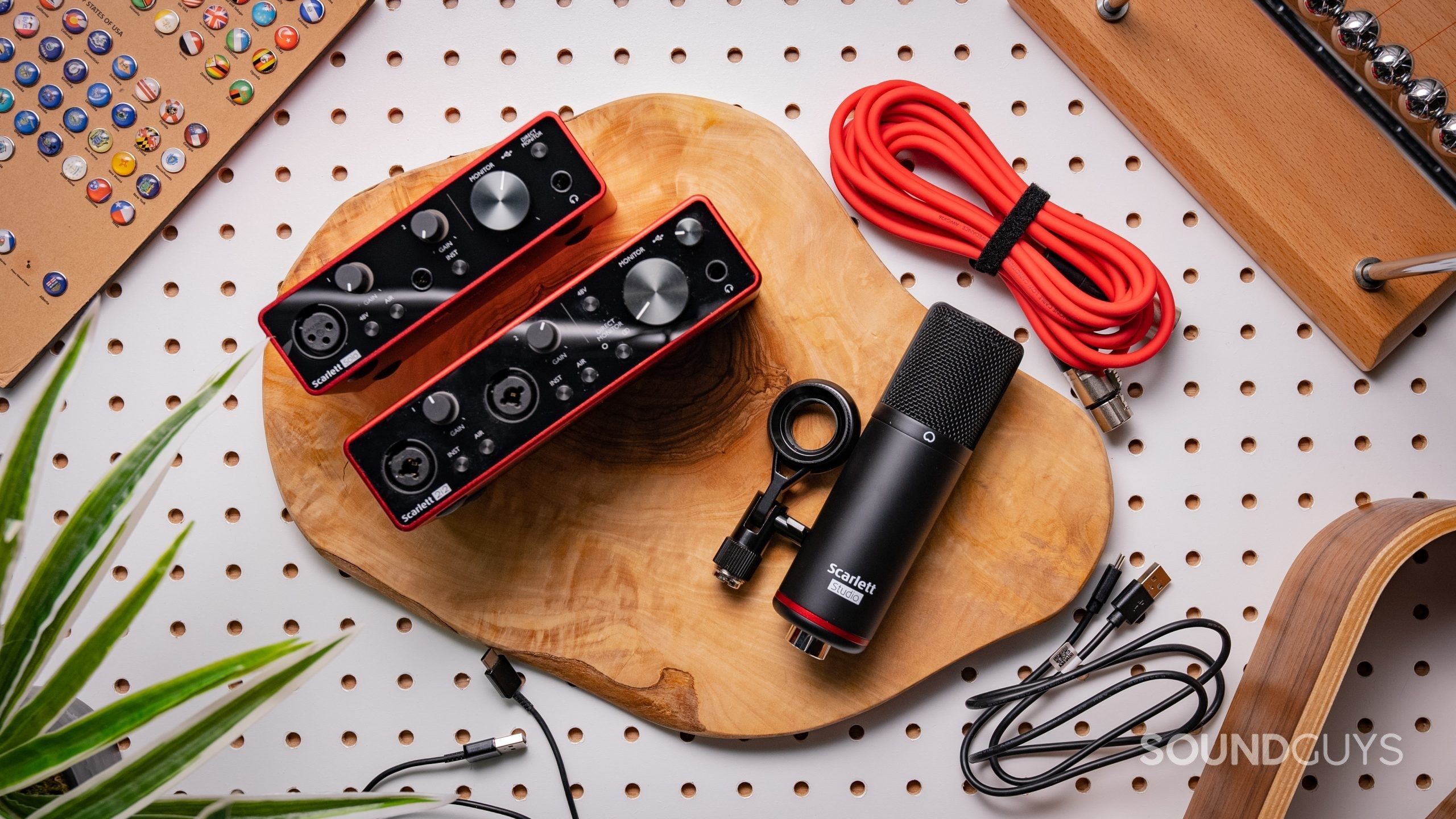
Those who know they will only ever need to record one microphone and one line instrument at a time may opt to save a couple bucks and get the Focusrite Scarlett Solo Studio for $229 at Amazon. Like the Focusrite Scarlett 2i2, the Scarlett Solo is a USB audio interface with two inputs. However, each of the Scarlett Solo’s inputs only works for one type of cable — either XLR or 1/4-inch. The XLR port has AIR mode and 48V phantom power, and the 1/4-inch port has INST mode. This interface also allows for direct monitoring via headphones and speakers.
The bundle is almost exactly the same as the Scarlett 2i2 Studio, except that instead of the Scarlett 2i2 it comes with the Scarlett Solo. It includes the CM25 MkIII condenser microphone and HP60 MkIII headphones — the interface is just smaller and simpler.
What should you get instead of the Focusrite Scarlett 2i2 Studio?
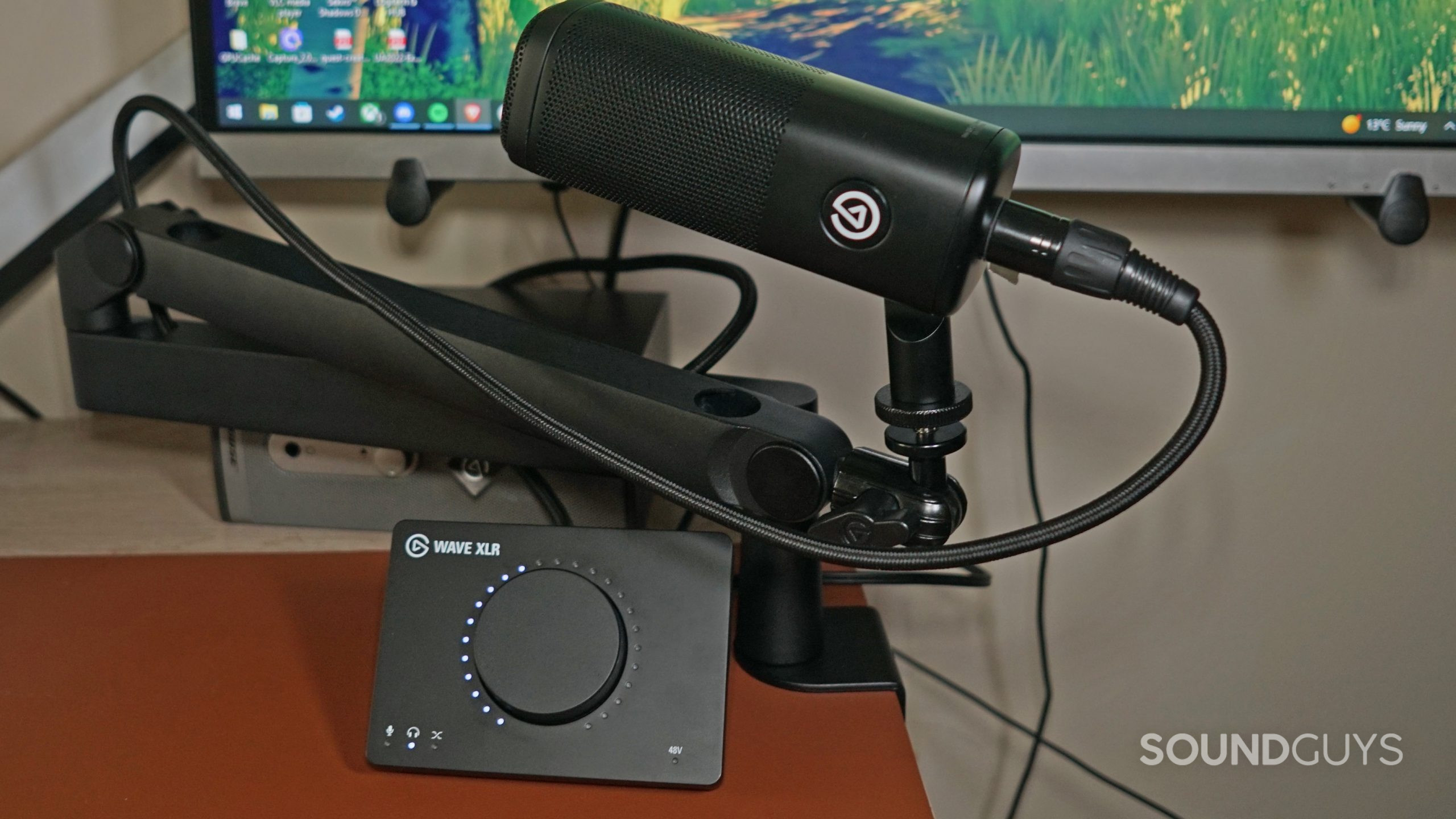
If you already have a pair of studio headphones and just need a microphone and audio interface may want to consider the Elgato Wave DX as an alternative. This is a much simpler product than the Focusrite Scarlett 2i2 Studio, and it is more suitable for podcasters or YouTubers than recording musicians. It runs a bit pricier than the Scarlett 2i2 Studio, but doesn’t include headphones and also only has one input rather than the Scarlett 2i2’s two. It is ideal for live streaming, though, thanks to its touch-sensitive mute button and large gain/volume dial.
Looking for a fancier pair of studio headphones? The Beyerdynamic DT 900 PRO X may be pricey, but this pair of open-back headphones has top-tier sound quality, a replaceable cable, and cozy plush ear cups. If you can’t spare $300 on a headset but the Focusrite HP60 MkIII doesn’t thrill you, we recommend the Sony MDR-7506 studio cans. Truly an industry standard, you can find these headphones in almost any recording studio.
If the Focusrite CM25 MkIII just isn’t living up to your microphone standards, we recommend the Shure MV7. This is a fantastic microphone sure to suit all of your recording needs as it has numerous settings to optimize it for any application.
For more recommendations of alternative headphones and microphones, check out our lists of the best studio headphones and the best recording microphones.
Frequently asked questions
As soon as you plug the interface into your computer’s USB port, the Scarlett 2i2’s buttons’ and dials’ LED lights should flash, signifying that it is powered on.
Any Focusrite product purchased on or after January 1, 2018 is subject to a three-year warranty starting on the date of purchase. This warranty applies only to manufacturing defects, and cannot be claimed if you damage the product during use.